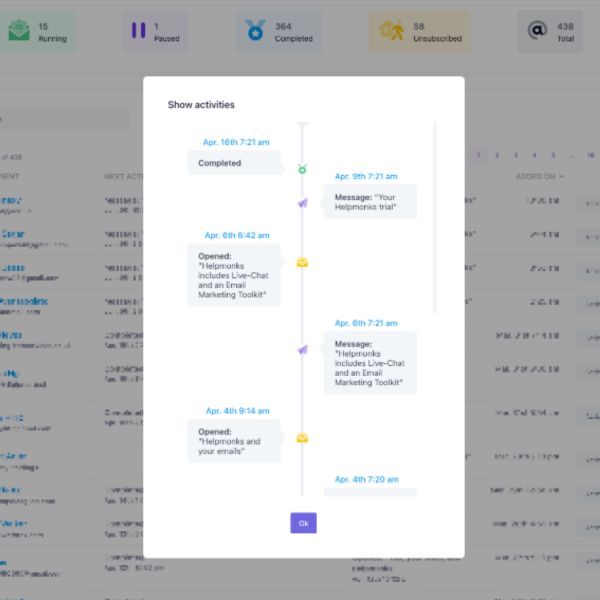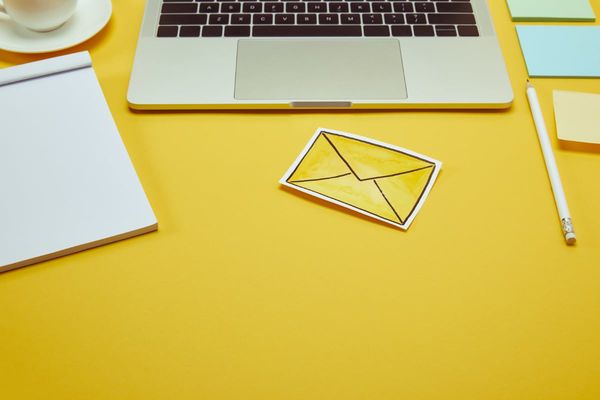
Mastering The Art of Dynamic Email Signatures
Dynamic email signatures increase brand visibility, build brand identity, and boost conversions. Learn how to create and update dynamic email signatures.
Read nowEmail trigger campaigns are one of the most effective ways to market your brand. Despite their high success rates, it's not uncommon for email trigger campaigns to backfire when done incorrectly.
Some of the worst-case scenarios you might get from a poorly executed email trigger campaign are recipients feeling spammed, annoyed, and potentially unsubscribing from your lists.
This article discusses triggered email campaigns, their benefits, and types and examples of trigger emails. Read on to find out how to conduct your campaigns like a pro.
Email trigger campaigns are automated emails that go out to your customers and prospects when they take certain actions. These actions could be anything from signing up for a newsletter to leaving items in their cart or making purchases.
Triggered email campaigns differ from traditional email marketing in that you don't compile a list of target customers and blindly blast out emails. Instead, you target more carefully and wait for the desired behavior. Then, you send out resources to solve a customer's immediate problem and help move them through the buying process.
Triggered email marketing is timely and relevant. It benefits the customer and your brand by giving customers the information they need and are interested in. Compared to traditional “Business As Usual" (BAU) campaigns, email trigger campaigns have 76% higher open rates and 3.7% higher click-through rates.
Let's take a look at the benefits of email trigger campaigns:
Some marketers worry that trigger emails might come across as too robotic since they're auto-generated. If this sounds like you, you can eliminate robotic emails through personalized messages and subject lines to your emails.
Most customers will only open an email if it is personalized. A study by Experian found that personalized trigger emails have 25% higher open rates and get as much as six times higher transaction rates than emails without personalization.
To personalize emails, collect data about your customers. Have them fill out a sign-up form and submit details such as their name, age, and location. Use this information to make automated emails more personal to every customer.
Trigger marketing uses events to send out emails. Therefore, a customer gets an email when they need it the most instead of when a brand wants to send it. Such timely messaging allows people to access relevant information, motivating them to take a desired action.
For example, if you're a fashion retailer, you can set up an abandoned cart email trigger. Customers who leave items in their carts without completing checkout will receive an automated email with a link to the cart and incentives such as discounts or free shipping, encouraging them to finish their purchase.
Providing an excellent customer experience is a great way to attract repeat customers and grow your brand. Email trigger campaigns allow you to respond to customer needs promptly, providing them with the best experience possible.
For instance, most customers expect to receive a confirmation email after buying from your business. Automating such emails will save you time and give your customer a satisfactory experience.
Additionally, when customers need help with a product or service, trigger emails can provide guidance on how to use them. Such advice shows customers that you care about their experience and are willing to walk them through tricky situations if needed.
Sending relevant, timely, and useful information during every step of a customer's buying process addresses their reservations, educates them on the brand, and helps build trust. This process is known as lead nurturing, and email triggers are perfect for it.
Lead nurturing emails should include helpful tips, product information, case studies, reviews, and more. Through this content, you can ensure customers receive the right message at the right time to move them through the buying process.
An example of lead nurturing is when someone signs up for a free trial of your software, and you set up an automated email that sends them content such as tutorials, case studies, or FAQs. This kind of content explains the features and benefits of the product to increase the chances of conversion.

There are many types of triggered email campaigns that your business can launch depending on your goals. Here are some popular types that you can implement in your upcoming campaigns:
These are emails that you send to new subscribers or customers. Welcome emails let new subscribers or customers know their opt-in is successful and encourage them to explore your website further.
There are numerous benefits to sending welcome emails to new subscribers, including:
Are shoppers leaving your website right before completing their purchase? Then it's time to send them an abandonment email. Abandonment emails are sent right after users leave your website without buying anything they've previously expressed interest in.
A great example of abandonment is when a customer browses a category, then leaves. Or when they fill a cart and then disappear.
Writing an abandonment email that converts takes work. But if you include the following elements in the email, you can increase the chance of conversion:
It's important to let customers know about the slightest changes to your catalog data, including price reductions or the addition of new products.
Product catalog emails are great for keeping customers updated with your latest offerings. Use these emails to drive customer engagement and make sure they never miss out on great deals.
Ensure that the content in your trigger product catalog emails is relevant to the customer. To do this, segment your customer list into different categories and target customers with the appropriate message.
Recommendation emails help customers discover products or services they've not yet explored.
These emails are great for driving conversions and sales as well as upselling. The goal of recommendation emails is to get customers to make a purchase they may not have previously considered.
Recommendation emails might come off as annoying if not targeted correctly. The trick is to ensure that you include personalized product recommendations based on the customer's past purchases or viewing history. Incorporate product images and descriptions, or highlight customer reviews to increase the chances of conversion.
A customer's journey does not end after they've purchased your products. That's why sending post-purchase emails is crucial to keep the relationship alive.
These emails are great to thank customers for their purchase, give instructions on how to use your product or service, and to ask for a review. Post-purchase emails offer an excellent opportunity to encourage customers to become loyal brand ambassadors by asking for feedback about their experience with you.
If the goal of your upcoming campaign is customer retention, reminder emails are your go-to trigger emails. These emails are designed to keep customers engaged with your brand by reminding them of the value they get from being a customer.
Reminder emails can be used for special occasions like birthdays or anniversaries, or seasonal offers such as discounts and coupons. Make sure that you include engaging content in the reminder email and add some incentives or a special offer to get customers back on your website.

Let's look at some examples of different types of trigger email campaigns. This way, you’ll know what to do when creating your own:
User sign-ups are a type of welcome email that lets the customer know that their account has been created and gives them a brief guide of what to do next.
A great way to start a customer relationship with your brand is to ensure that your user sign ups:
Newsletter subscriptions are a great way to keep customers engaged with your brand and nudge them to buy from your store. When crafting these emails, ensure they're engaging, informative, and include a clear call to action.
When sending out newsletter subscription emails, make sure to include:
Cart abandonment emails are a type of abandonment email that attempts to get customers to return to their carts and complete their purchases. These emails should be short, sweet, and persuasive.
Ensure that your cart abandonment email:
Back in stock emails are a type of product catalog email that lets customers know when an item they're interested in is back in stock.
A great way to get customers excited about coming back to your store is to include information such as:
Email trigger campaigns are a powerful tool for any business. They allow you to deliver timely and relevant messages to customers, build relationships, and gather valuable data about customer behavior.
However, managing email campaigns can be time-consuming for teams of any size. That's where Helpmonks comes in.
We are an email management platform designed to help teams of any size easily manage their email campaigns. With an intuitive user interface, automated features, and powerful analytics capabilities, we make it easier than ever for businesses to create effective triggered email campaigns.

Dynamic email signatures increase brand visibility, build brand identity, and boost conversions. Learn how to create and update dynamic email signatures.
Read now
Looking for an email marketing automation software? This guide shows what to look for. We'll also review the best tools for your online marketing needs.
Read now
Using customer engagement solutions helps you keep your existing customer base and grow. Here are the top 10 customer engagement solutions for your business.
Read now
Email management for team inboxes is only effective when used to its full potential. This guide has the 10 best practices for managing your team inboxes.
Read now
Empower your team and delight your customers.
